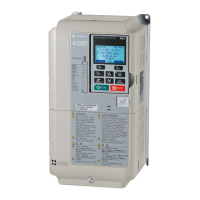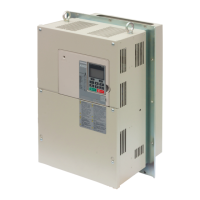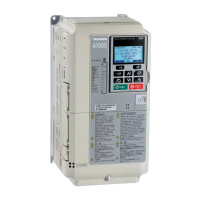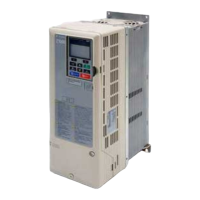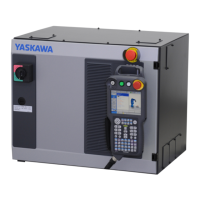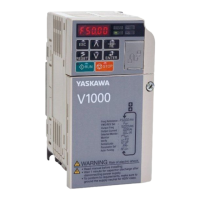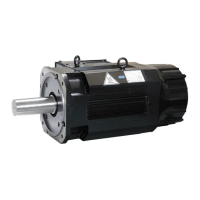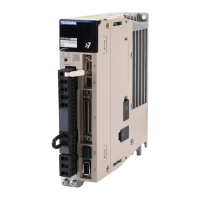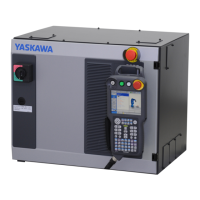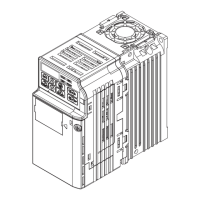No. Name Setting Range Default
n2-01 AFR Gain 0.00 to 10.00 1.00
Although this parameter rarely needs to be changed, it may require adjustment in the following situations:
• If hunting occurs, increase the setting value in steps of 0.05 while checking the response.
• If response is low, decrease the setting value in steps of 0.05 while checking the response.
n
n2-02, n2-03: AFR Time Constant 1, 2
Parameter n2-02 sets the time constant normally used by AFR.
Parameter n2-03 sets the time constant during Speed Search or regenerative operation.
No. Name Setting Range Default
n2-02 AFR Time Constant 1 0 to 2000 ms 50 ms
n2-03 AFR Time Constant 2 0 to 2000 ms 750 ms
Note: Setting parameter n2-02 higher than n2-03 will trigger an oPE08 error.
Although these parameters rarely need to be changed, they may require adjustment in the following situations:
• If hunting occurs, increase n2-02. If response is low, decrease it.
• Increase n2-03 if overvoltage occurs with high inertia loads at the end of acceleration or with sudden load changes.
• If setting n2-02 to a higher value, increase C4-02 (Torque Compensation Delay Time Constant 1) proportionally.
• If setting n2-03 to a higher value, increase C4-06 (Torque Compensation Delay Time Constant 2) proportionally.
u
n3: High Slip Braking (HSB) and Overexcitation Braking
n
High Slip Braking (V/f)
HSB works in V/f Control only and decreases the stopping time compared to normal deceleration without using dynamic
braking options. HSB reduces the output frequency in large steps to stop the motor and produce a high slip, which dissipates
the regenerative energy created from decelerating the load in the motor windings. Due to the increased temperature of the
motor windings, do not use HSB to frequently stop the motor. The duty cycle should be around 5% or lower.
Notes on using High Slip Braking
• The set deceleration time is ignored during HSB. Use Overexcitation Deceleration 1 (L3-04 = 4) or a dynamic braking option
to stop the motor within a specified time.
• Braking time varies based on the load inertia and motor characteristics.
• Enabling HSB and KEB Ride-Thru simultaneously will trigger an oPE03 error.
•
HSB must be triggered by a digital input set to H1-oo = 68. After the HSB command is given, the drive will not restart
until the motor is completely stopped and the Run command is cycled.
n
Overexcitation Deceleration (Induction Motors)
Increases the flux during deceleration and allows shorter deceleration time settings without the use of a braking resistor.
Enabled by setting L3-04 to 4 or 5. Refer to L3-04: Stall Prevention Selection during Deceleration on page 142.
Notes on Overexcitation Deceleration
• Frequently applying Overexcitation Deceleration raises the motor temperature because regenerative energy is mainly
dissipated as heat in the motor. In cases where frequent application is required, make sure the motor temperature does not
exceed the maximum allowable value or consider using a braking resistor option in lieu of Overexcitation Deceleration.
• During Overexcitation Deceleration 2, Hunting Prevention in V/f Control and torque limits in OLV Control are disabled.
• Do not use Overexcitation Deceleration in combination with a braking resistor option.
• Overexcitation Deceleration can be used in OLV and CLV, but it lowers the accuracy of Torque Control and braking
efficiency. It can be most efficiently used in a V/f Control.
• Overexcitation Deceleration cannot be used with PM motors.
Parameter Adjustments
• Use parameters n3-13 through n3-23 to adjust Overexcitation Deceleration.
• When repetitive or long Overexcitation Deceleration causes motor overheat, lower the overexcitation gain (n3-13) and reduce
the overslip suppression current level (n3-21).
• During Overexcitation Deceleration 1 (L3-04 = 4), the drive decelerates at the active deceleration time (C1-02, C1-04, C1-06,
or C1-08). Set this time so no overvoltage (ov) fault occurs.
1.9 n: Special Adjustments
YASKAWA ELECTRIC SIEP YEAHHP 01B YASKAWA AC Drive – A1000 HHP Programming Manual
159
1
Parameter Details
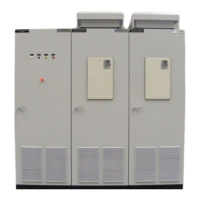
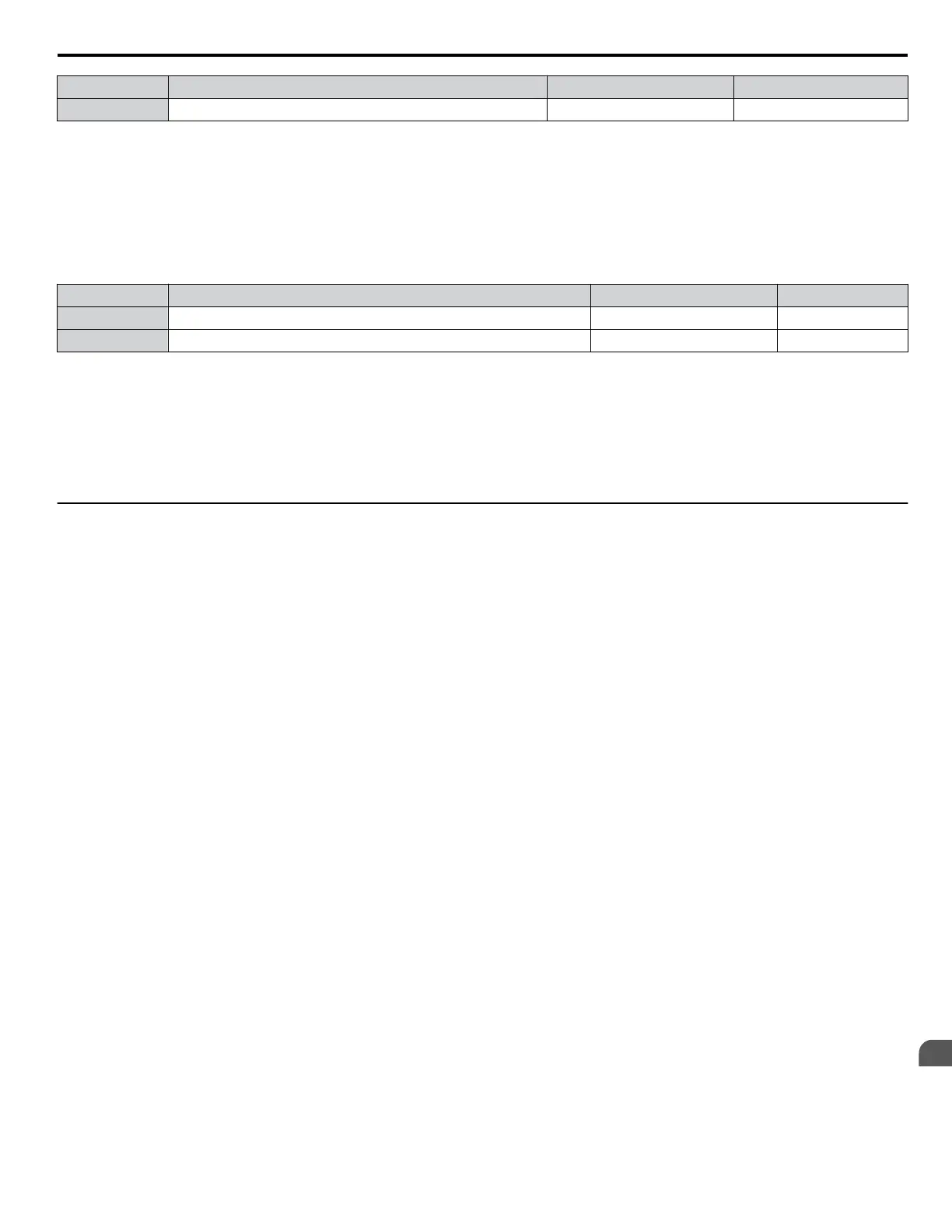